Clancy Tucker's Blog, page 128
January 20, 2019
21 January 2019 - THE HISTORY OF AMERICAN CORN KNIVES
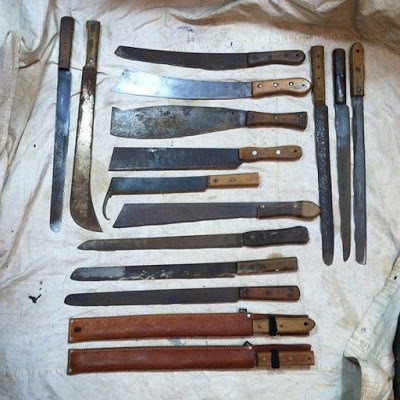
THE HISTORY OF AMERICAN CORN KNIVES
G'day folks,
Early American settlers invented new tools to harvest a new crop.
Though Americans often think of cornbread and corn pudding as original Southern specialties, getting corn onto colonial tables was not as easy as pumpkin pie. In the beginning, European prejudice labeled corn as a “heathan graine” unfit for consumption. But it wasn’t long before the settlers were forced to put aside their judgments of Native Americans’ diets, as they could not afford to ignore the benefits of the easy-growing, nutritious crop. First they integrated the grain into feed for their livestock, but by the 18th century, corn pudding and other corn preparations graced even the tables of the upper class.
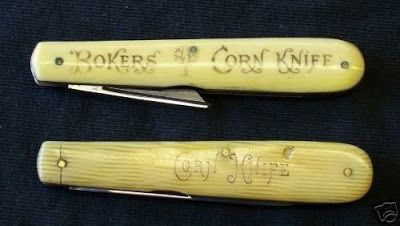
However, because corn was native to the “New World,” English settlers didn’t yet have tools specific for chopping corn stalks. Instead they used hoes, scythes and sickles, machetes, and butcher cleavers. Eventually these knives were adapted for the specific task of cutting down the fibrous stalks and became what are known as corn knives. Some corn knives had long handles with straight or curved blades, others looked more like machetes, while one kind, the corn hook, featured a wide, curving blade in the shape of a C.

Harvesting required laborers to chop down each stalk by hand. After being chopped by the corn knife, corn stalks would be set up in bundles known as shocks to “cure” or dry out for about a month. Once they’d dried, workers came through to husk the corn, then transported the cobs to a crib, a covered, but ventilated, house or granary used to store corn.
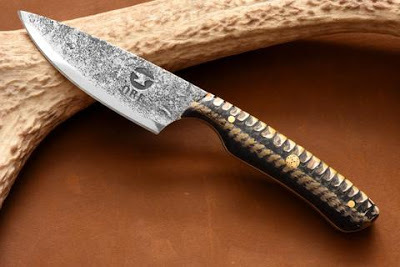
Thanks to industrial production in the 19th century, corn knives went from a handmade “folk” product to a mass-produced tool. And while some antique knives can still be found, today more than 99 percent of corn is harvested using gas-powered machinery, making the knives a specialty antique. Hand-harvested stalks have also become a rare sight, but around Halloween, you can often find small shocks perched beside hay bales and pumpkin displays, symbols of the innovation and labor that once was.
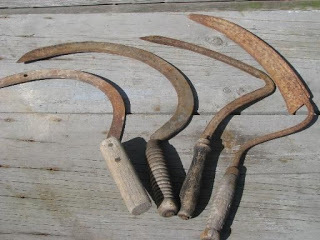
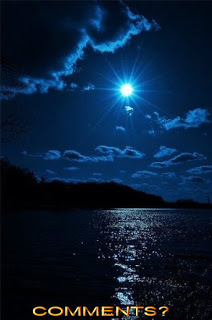
Clancy's comment: There ya go. Necessity is the mother of invention, eh?
I'm ...
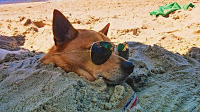

Published on January 20, 2019 13:31
January 19, 2019
20 January 2019 - DIANE GUNTRIP - GUEST AUTHOR

DIANE GUNTRIP - GUEST AUTHOR -
G'day folks,
Today, I interview a very talented woman from Western Australia.
Welcome, Diane ...
1. TELL US A LITTLE ABOUT YOURSELF AND YOUR WRITING JOURNEY.
I have had a long and varied career in education, teaching and coaching students at all levels. However, along the way, I have delved into many other creative pursuits such as textiles, jewellery designing and designer cushion manufacture. It was during one of my many creative phases that I had the urge to write some short stories.
2. WHEN AND HOW DID YOU BECOME A WRITER?
It is a long story so I will aim to make it as brief as possible. When I began to write short stories over fifteen years ago, I had no intention of taking the project seriously nor did I have any aspirations to publish my stories. On completion, they were stored on my computer and forgotten. A few years later, I thought I’d have another look at them. One in particular, ‘Dear H’ stood out and I had the idea to expand the story and write it as a diary. Again, on completion it was put aside. Further down the track I asked a neighbour’s granddaughters to read the manuscript. They encouraged me to have the manuscript published. As the subject was and remains topical, I decided to self-publish the book as I felt it imperative to reach as many young people as quickly I could.
3. WHAT TYPE OF PREPARATION DO YOU DO FOR A MANUSCRIPT? DO YOU PLAN EVERYTHING FIRST OR JUST SHOOT FROM THE HIP?
My first book, ‘Dear H’ was a progressive creative pursuit. The sequel, ‘The Daisy Chain’ was planned ‘in my head’ before I began to write. I knew exactly what was going to happen from start to finish. My third book, which I am presently writing, has also been planned from start to finish.
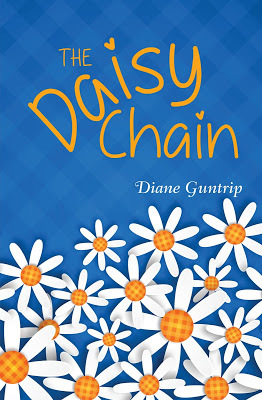
4. WHAT DO YOU ENJOY MOST ABOUT BEING A WRITER?
In my writing I aim to bring awareness to the issues that are relevant to young people of today. I enjoy immersing myself into characters who are dealing with emotional issues and hope that my young readers can identify with the characters and find solutions to their own situations.
5. WHAT IS THE HARDEST THING ABOUT BEING A WRITER?
It is not the writing that poses the problems but reaching the target audience.
6. WHAT WERE YOU IN A PAST LIFE, BEFORE YOU BECAME A WRITER?
I began my teaching career in the UK as a specialist teacher of Textiles. On arrival in Australia, this subject was not taught as a specialist subject so I focussed on primary education. Alongside this, I studied for a Diploma in Counselling and ran a tuition business for eight years. Throughout my teaching career, I have always been creative and have followed pursuits in speech training, singing, piano, jewellery design and spoken French to name a few.
7. WHAT IS YOUR GREATEST WRITING ACHIEVEMENT?
‘Dear H’ is my greatest writing achievement so far. When I wrote the story, I was unaware how powerful the book was. Initially, I considered it a book to be read and enjoyed. However, after it was pointed out to me that it contained such a powerful message, I began to view the book in a completely different light. Since then I have been instrumental in presenting workshops in schools in Western Australia and in the UK based on the book and the topic of bullying. I have also presented workshops to adult groups. I am open to invitations to present workshops both in Australia and in the UK.
8. WHAT ARE YOU WORKING ON AT THE MOMENT?
At the present time, I am working on the story of Tilly, a character who was mentioned briefly in ‘The Daisy Chain’. Again, I have chosen topics that are often difficult to openly discuss, such as grief and a teen pregnancy which has devastating effects for the character’s future plans.
9. WHAT INSPIRES YOU?
I am deeply interested in people and their emotions and what makes them tick.
10. WHAT GENRE DO YOU WRITE?
I suppose you would call my books human interest but this doesn’t really describe them. ‘Dear H’ was written for an audience of girls from age ten+. However, my presentations are to boys and girls and both are reading and buying the book. Many adults have also purchased the book and enjoyed it. ‘The Daisy Chain’ is the sequel and is aimed at a female audience of 13 years+.
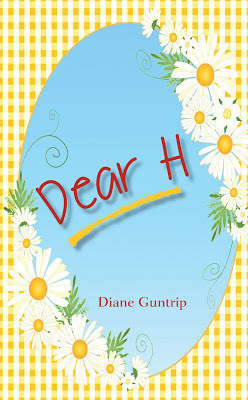
11. DO YOU HAVE ANY TIPS FOR NEW WRITERS?
If you have the urge to write, then follow it.
12. DO YOU SUFFER FROM WRITER’S BLOCK?
Not in general.
13. DO YOU HAVE A PREFERRED WRITING SCHEDULE?
No I don’t.
14. DO YOU HAVE A FAVOURITE WRITING PLACE?
I always sit in my study to write.
15. WHAT IS YOUR GREATEST JOY IN WRITING?
My greatest joy is not in my writing but sharing my books with young people.
16. WHAT’S THE GREATEST COMPLIMENT YOU EVER RECEIVED FROM A READER?
‘Being bullied – openly or covertly, is something that psychologically scars a child and/or adult for life. It changes the way they walk, talk, breathe and think from the moment of impact. This is a truly moving and beautiful exploration of one girl’s experience of bullying and her resilient way of coping. She draws on her internal and external resources and with guts, determination and grit she overcomes.’ Claire Orange Children’s Mental Health Specialist and Author. February, 2017
17. WHAT WAS THE WORST COMMENT FROM A READER?
I haven’t received a poor review yet!
18. WRITERS ARE SOMETIMES INFLUENCED BY THINGS THAT HAPPEN IN THEIR OWN LIVES. ARE YOU?
Perhaps a little of me creeps into my books. In ‘Dear H’ I did yearn to be a singer at one stage. However, I have not experienced bullying.
19. OTHER THAN WRITING, WHAT ELSE DO YOU LOVE?
Travelling would be top of the list at the moment. I would like to incorporate book presentations in with this,
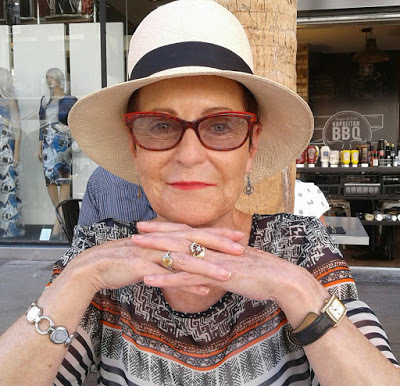
20. DOES THE PUBLISHING INDUSTRY FRUSTRATE YOU?
Yes. It is so hard to have a book published and the process is so slow.
21. WHAT SHOULD READERS WALK AWAY FROM YOUR BOOKS KNOWING? HOW SHOULD THEY FEEL?
I would like to think that my readers identified with my characters and felt empowered and motivated to face the future with the resources and determination they have within themselves.
22. WOULD YOU LIKE TO HAVE YOUR BOOKS MADE INTO MOVIES? EVER WRITTEN A SCREENPLAY?
This has been suggested to me by some of my readers, one of them being a journalist. I told them that it would be wonderful. However, it is not quite so simple a process.
HOW MUCH THOUGHT GOES INTO DESIGNING A BOOK COVER?
I try to involve student input when making decisions on my book covers.
WHAT’S YOUR ULTIMATE DREAM?
My ultimate dream would be to see my books read by a much wider audience. The topics are universal and are so important. ‘The Daisy Chain’ contains Amanda’s ideas on how to implement an anti bullying strategy. More than anything, I would like to see similar strategies trialed.
23. ARE YOUR BOOKS SELF-PUBLISHED?
Yes, my books are self published.
24. DESCRIBE YOURSELF IN FIVE WORDS.
Perfectionist. Determined. Strong. Focused. Humanitarian.

WEBSITE
AMAZON

Clancy's comment: Well done, Diane. Thank you. Keep up the good work, and may you sell heaps of books.
I'm ...


Published on January 19, 2019 12:47
January 18, 2019
19 January 2019 - MOUNT ETNA – BEAUTIFUL AND WILD
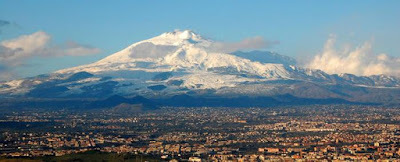
MOUNT ETNA- BEAUTIFUL AND WILD -
G'day folks,
Welcome to some background and photographs of an active volcano.
Mount Etna, or Etna, is an active stratovolcano on the east coast of Sicily, Italy, in the Metropolitan City of Catania, between the cities of Messina and Catania. It lies above the convergent plate margin between the African Plate and the Eurasian Plate.

Mount Etna is the largest active volcano in Europe, measuring some 3,329 m (10,922 ft). Mt. Etna has been active for the whole duration of recorded history and has inspired many myths. The Ancient Greeks believed that Zeus imprisoned the monster Typhon under Etna and that the forge of Hephaestus lies at its core.
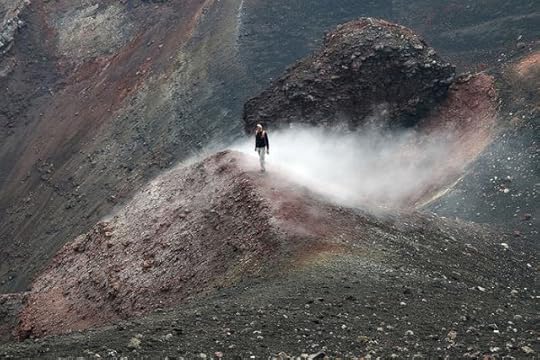

Mt. Etna is indeed magnificent, yet it can turn violent at a moment’s notice, spewing deadly lava down its slopes.

Interesting fact: There are two ski resorts on Mt. Etna.

Mt. Etna is a mecca for tourists, allowing them to experience the might of an active volcano in relative safety.

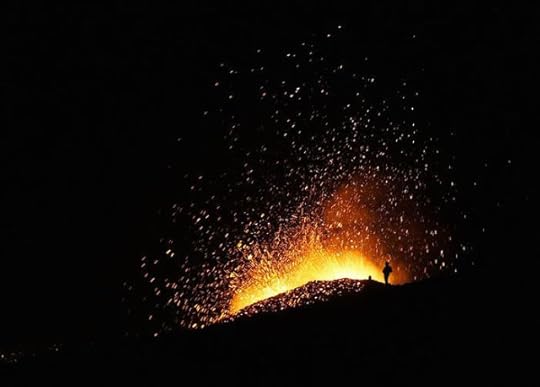




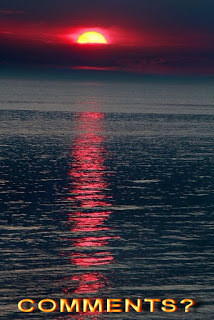
Clancy's comment: This is a fabulous part of the world, especially for photographers.
I'm ...
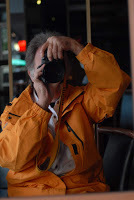

Published on January 18, 2019 19:26
January 17, 2019
18 January 2019 - INTERESTING FACTS ABOUT THE THREE TOED SLOTH
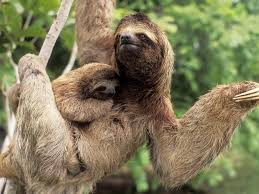
INTERESTING FACTS ABOUT THE THREE TOED SLOTH
G'day folks,
The sloth is the world's slowest mammal, so sedentary that algae grows on its furry coat.
The three-toed sloths are tree-living mammals from South and Central America. They are the only members of the genus Bradypus and the family Bradypodidae. The four living species of three-toed sloths are the brown-throated sloth, the maned sloth, the pale-throated sloth, and the pygmy three-toed sloth.

Quick FactsType: MammalDiet: HerbivoreLifespan: 25-30 yearsSize: 56-60cmHabitat: Tree dwelling in rain forestRange: South and Central AmericaScientific name: Bradypus Sloths are identified by the number of long, prominent claws that they have on each front foot. There are both two-toed and three-toed sloths.There are four living species of three-toed sloths; these are the brown-throated sloth, the maned sloth, the pale-throated sloth, and the pygmy three-toed sloth which was only recognised as a distinct species in 2001.The pygmy three-toed sloth can only be found on Isla Escudo de Veraguas which has been separated from mainland Panama for 9,000 years. The major threat to the pygmy three-toed sloth is habitat destruction which is reducing the size of its already small habitat.Being the world’s slowest mammal, the sloth travels at a top speed of 0.24 kilometres per hour (0.15 mph). They are so sedentary that algae grows on their furry coat.Sloths make a good habitat for other organisms, and a single sloth may be home to moths, beetles, cockroaches and fungi as well as algae.The three-toed sloth is arboreal (tree-dwelling), with a body adapted to hang by its limbs; the large curved claws help the sloth to keep a strong grip on tree branches. It lives high in the canopy but descends once a week to defecate on the forest floor.Sloths sleep in trees – some 15 to 20 hours every day. Even when awake they often remain motionless.At night they eat leaves, shoots and fruit from the trees and get almost all of their water from juicy plants.Dead sloths have been known to retain their grip and remain suspended from a branchSloths will move between different trees up to four times a day, although they prefer to keep to a particular type of tree, which varies between individuals, perhaps as a means of allowing multiple sloths to occupy overlapping home ranges without competing with each other.Although they are quite slow in trees, three-toed sloths are agile swimmers. On land, sloths’ weak hind legs are not very powerful and their long claws are a hindrance. They cannot walk on all four limbs so they must use their front arms and claws to drag themselves across the rain forest floor.If caught on land, these animals have no chance to evade predators such as big cats and must try to defend themselves by clawing and biting.In trees the sloth’s greenish color and its sluggish habits provide an effective camouflage; hanging quietly, the sloth resembles a bundle of leaves.The three-toed sloth, unlike most other mammals, does not fully maintain a constant body temperature, and this limits it to warm environments.Sloths mate and give birth while hanging in the trees. Females give birth to a single young after a gestation period of around six months.Three-toed sloth babies are often seen clinging to their mothers — they travel by hanging on to them for the first nine months of their lives.Once sloth babies are weaned, the mother leaves her home territory to her offspring and moves elsewhere.Adults are solitary, and mark their territories using anal scent glands and dung middens.Sloths have extra neck vertebrae that allows them to turn their heads some 270 degrees.Extinct sloth species include many ground sloths, some of which were as big as elephants.



Clancy's comment: Charming face, eh?
I'm ...
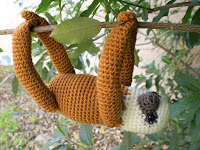

Published on January 17, 2019 09:52
January 16, 2019
17 January 2019 - TOURIST ATTRACTIONS IN GENEVA
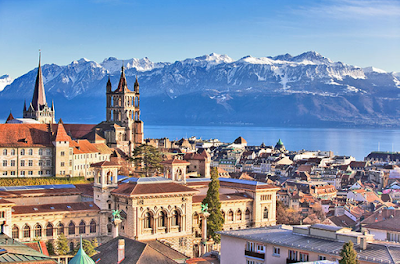
TOP TOURIST ATTRACTIONS IN GENEVA
G'day folks,
The Swiss city of Geneva is home to some 200,000 people, and in spite of its small size relative to others, is considered a global city thanks to its financial services sector and due to the fact that it’s a worldwide center for diplomacy. It’s home to many United Nations agencies, as well as the international headquarters of the Red Cross. Here are some of the best tourist attractions to visit in Geneva.

Patek Philippe is a world-famous Swiss watch manufacturer, so it’s fitting that this illustrious company that’s over half a millennium old has its very own museum in Geneva. It’s fascinating to visit – it features the oldest watch in the world, as well as an antique collection that’s stunning to behold. In fact, there are over 2,000 exhibits on show. Its galleries also show the step-by-step process and evolution of how Patek Philippe watches are made. Last but not least, you can also see some of the company’s master watchmakers at work.

The Palace of Nations, as it’s called in English, was founded in 1938 and has hosted thousands of intergovernmental meetings ever since. It’s the second most important United Nations office on Earth after the supranational body’s New York headquarters. Be sure to take the guided tour so that you take in all of its main landmarks, which include the Council Chamber and Assembly Hall.

The botanical gardens of Geneva can be found on the western shore of the city’s lake, and contain over 14,000 plant species from all over the world. There’s an almost endless array of flowerbeds, ponds and rose garden to explore, with the herbarium housing over six million plant specimens alone. There’s even an on-site zoo for you to take in.

A popular spot for both tourists and locals alike, the Bains des Paquis are located on the western shore of Lake Geneva. People flock here to wallow in the public baths, exercise or relax on the pier or beach. The area is mostly frequented during the summer, but there are a sauna and hammam on hand for hardy winter swimmers to warm up in. In addition, it plays host to numerous cultural events such as classical music recitals and local festivals, all of which add to its intoxicating atmosphere.

Geneva’s Natural History Museum opened in 1996 and houses a fine collection that houses everything from taxidermy, to insect specimens, to moon rocks and fossils. It’s very well laid-out, and this makes it an excellent place to visit if you have a young family. One of the museum’s star attractions is Janus, a living, two-headed tortoise that has managed to defy biological norms by living for over 20 years to date.

Towering some 4,500 feet over Geneva, Mont Saleve appears to be impenetrable from below, but you can actually get to its summit by hiking, biking or driving. Another option is to take the cable car, which will take you to the top in no time at all. When you’re there, you can take in spectacular views of the city below you, as well as of the Jura Mountains and Mont Blanc off in the distance. There are also activities such as rock climbing, mountain biking and paragliding to enjoy.

St. Peter’s Cathedral was constructed between 1160 and 1252 in an architectural style that’s largely Gothic. With that being said, it features a Neo-Classical façade that was added in the 18th century. Interesting to note is the fact that the cathedral was constructed on the site of a 4th-century basilica. Its roof boasts distant views of the Alps, and its interior is unassuming and undecorated in comparison to many cathedrals and churches.
The historic center of Geneva is full of beautiful old buildings, labyrinthine streets and picturesque squares. Wandering around it is a delightful experience, and there are galleries, museums, historically-significant building, and atmospheric cafes to take in. Bourg-de-Four square, which used to be a Roman marketplace, is an absolute must-visit.

The European Organization for Nuclear Research is a fascinating place where loads of cutting-edge scientific experiments are conducted every day. It features the largest particle physics laboratory in the world, which you can tour. The particle accelerator is a particular highlight, as is the museum, which details the history of the organization and what it has achieved in the time since it opened.

The Jet d'Eau is a world-famous fountain that spurts 500 liters of water per second into the air. It's one of Geneva's most iconic attractions and has become a symbol of the city over the years. It's accessible from a small stone jetty, but prepare to get wet if you get too close to it! It's located at the spot where Lake Geneva joins the Rhone river.
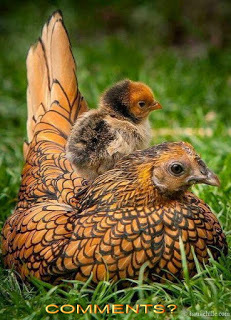
Clancy's comment: It is worth visiting.
I'm ...

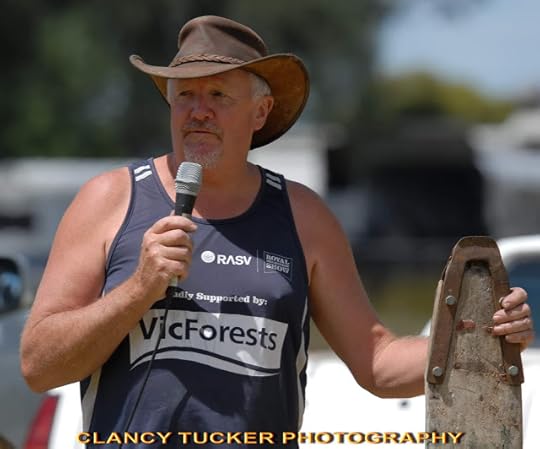
Published on January 16, 2019 12:59
January 15, 2019
16 January 2019 - SCOTT KELLY - ASTRONAUT
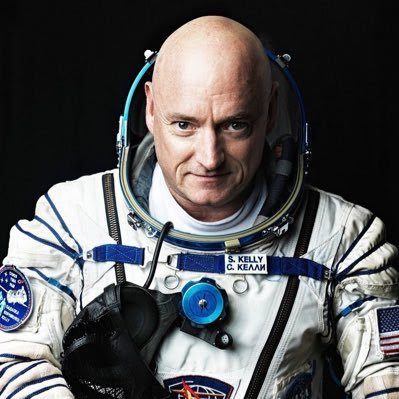
SCOTT KELLY - ASTRONAUT -
G'day folks,
Scott Kelly is a retired American astronaut who's served on four space flights in his career. His identical twin brother, Mark Kelly, is also a retired American astronaut, and together, they are the only siblings in history who've traveled to space.
Who Is Scott Kelly?
Born in 1964, Scott Kelly is a retired American astronaut, former military pilot, engineer and retired U.S. Navy Captain who's served on four space flights. For his first spaceflight, Kelly served as a pilot on the Space Shuttle Discovery in 1999, followed by Expedition 26, 45, and 46, serving as commander for the last three. In his final expedition, Kelly achieved his biggest feat in his NASA career by spending a year aboard the International Space Station (ISS) from March 2015 to March 2016. Shortly after returning to Earth, he announced his retirement on April 1, 2016. Kelly has an identical twin brother, Mark, who is also a retired astronaut and is married to Congresswoman Gabrielle Giffords.

Early Life and Education Scott Kelly was born Scott Joseph Kelly on February 21, 1964 in Orange, New Jersey to Irish parents Richard and Patricia Kelly.
Although he was a self-admitted troublemaker in school who often fought with his twin brother, Scott finished high school in 1982. He then matriculated to the State University of New York (SUNY) Maritime College, receiving his four-year degree in electrical engineering in 1987 before finishing up his master's degree in aviation systems almost a decade later at the University of Tennessee, Knoxville.

Scott and Mark Kelly's DNA One of the goals of Kelly's year-long spaceflight (the mission was actually 11 months) was to test how space's extreme environment affects the human body and how to better prepare future astronauts on future missions.
When Kelly returned to Earth in March 2016, his genes were compared to that of his brother Mark. The initial findings showed that Kelly had a seven percent change in gene expression from Mark and that even six months later, those changes remained.
While Kelly's DNA did not change, "his body quieted some of his genes while amplifying others, so that his body produced more or less of certain key proteins in an attempt to adjust to the weird conditions of space and microgravity," explained Live Science.
But that's not the entire story. According to Kelly, being in space for such a long time takes an immense physical toll on the body. Upon his return to Earth, Kelly told The Guardian he had to deal with "... stiffness, swelling of my legs, rashes where my skin hasn’t touched anything, nausea. In space you lose a significant amount of blood volume. You regain it when you get back very quickly, but what you don’t regain is the red blood cells you lost with it and that takes months to recover. That makes you feel fatigued. It’s a six- to eight-month recovery."

So is there any physical consolation to traveling to space? Perhaps. Technically, it shaved 13 milliseconds off Kelly's age. Considering he was already six minutes younger than his brother Mark, now he can say he's "six minutes and 13 milliseconds younger."

Naval Career In 1989 Kelly became a Naval Aviator and completed his training at the Naval Air Station Oceana, Virginia, before being deployed overseas. He later became a test pilot, eventually logging in over 8,000 flight hours and working up to the rank of U.S. Navy Captain before retiring from active duty in 2012.

Clancy's comment: A high achiever, eh? However, he can have the space travel. Not for me.
I'm ...
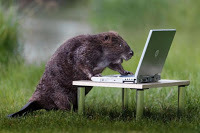

Published on January 15, 2019 14:08
January 14, 2019
15 January 2019 - STUNNING PHOTOGRAPHY
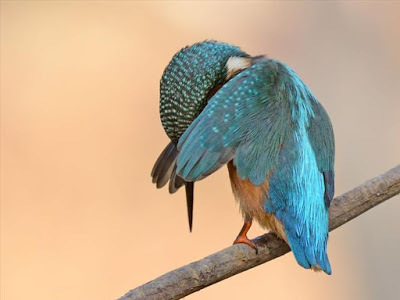
STUNNING PHOTOGRAPHY
G'day folks,
Welcome to some great shots by photographers around the world.
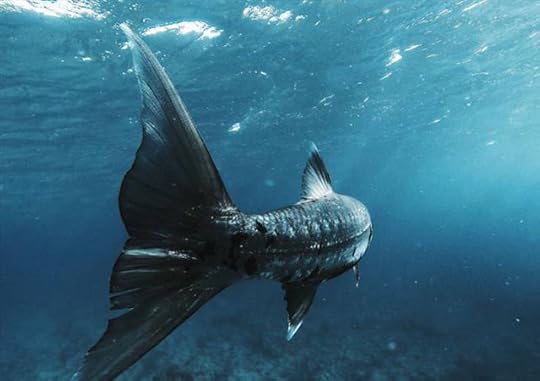




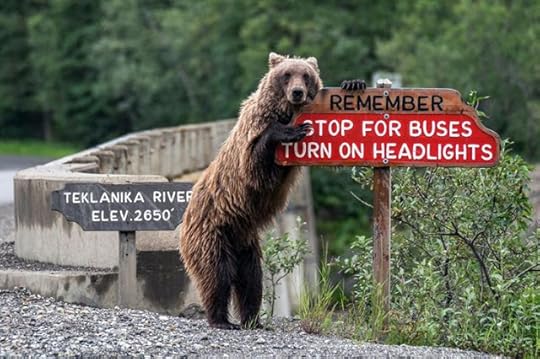


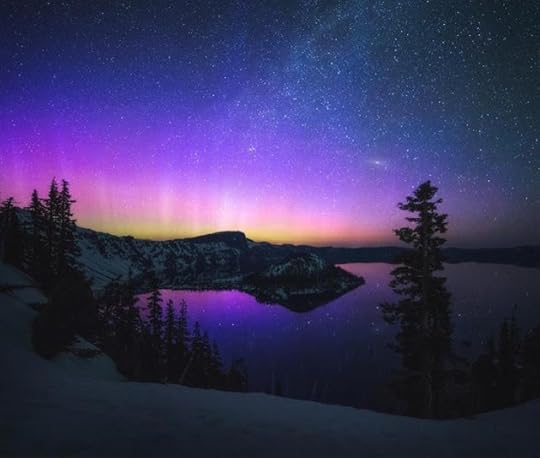





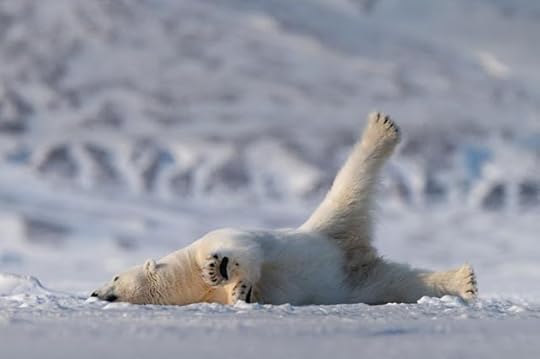

Clancy's comment: Pretty good, eh?
I'm ...


Published on January 14, 2019 12:23
January 13, 2019
14 January 2019 - ANCIENT TUNNELS BENEATH NAPLES
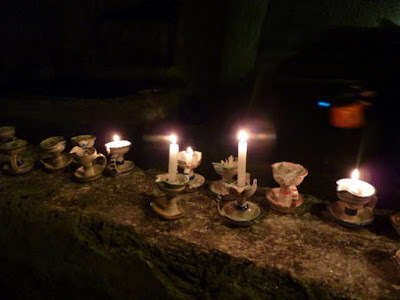
ANCIENT TUNNELS BENEATH NAPLES
G'day folks,
A labyrinth of ancient tunnels hidden below the city holds the ruins of 2,500 years of history. Underneath the ancient city of Naples lies a vast geothermal zone composed of tuff, a volcanic rock. Over the last two-and-a-half millennia, extensive caves and tunnels have been carved out of the tuff, forming a shadow city obscured below the ground.
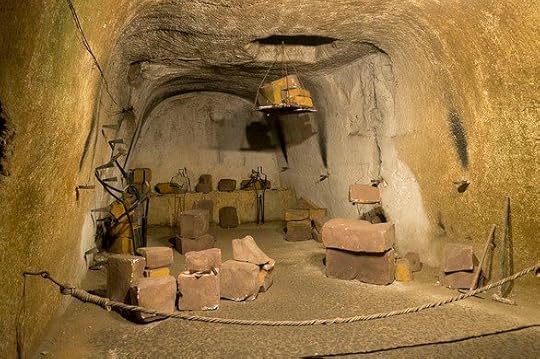
The 280-mile (450-kilometer) subterranean network was formed by the Greeks in the 4th century BCE in order to build what was then named Neapolis, or “New City.” The Romans later used the chambers and pathways to build aqueducts that provided water for many centuries of Neapolitans. As the centuries passed, buildings where constructed on top of previous ancient infrastructure, and the the remains of these structures are were hidden deep below the city.
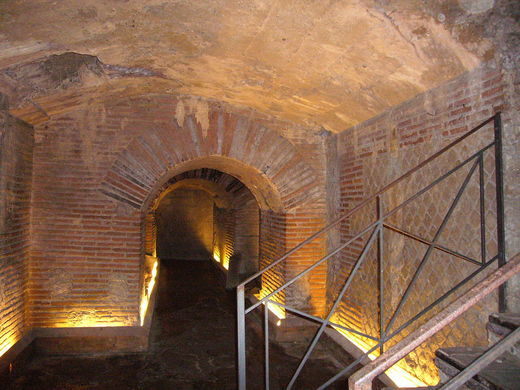
Today, Napoli Sotterranea (Naples Underground) offers a chance to explore this Italian city from a different point of view. Down a long case descending some 120 feet (40 meters) below the earth, aqueducts, sewer tunnels, rainwater cisterns, caverns, catacombs, and pre-Christian hypogea can be found in the tuffaceous cavities, along with roadway and rail tunnels. Some caves that were part of the reservoir are still full of water today. One highlight of the subterranean network is the remains of the Greco-Roman theatre of Neapolis, where the Roman emperor Nero also had his private dressing room.
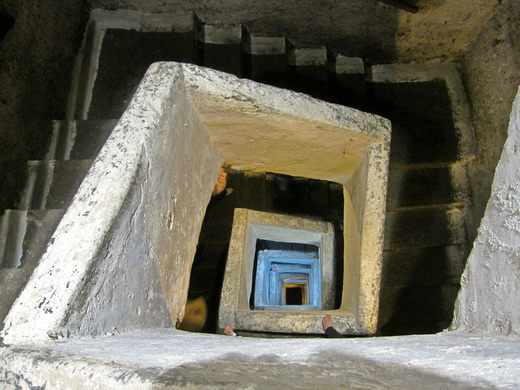
Many years later, the underground network was used as an air raid shelter during the Second World War, and you can still see forgotten war relics such as weapons and vehicles in the tunnels. More recently, the first Hypogeum Gardens in the world can be found, an experiment to grow various species of plants far from pollution, but also light, in the dark chambers underneath the city.

Some tunnels are very narrow and it is necessary to use a candle to see, for this reason some passages of the route are optional.

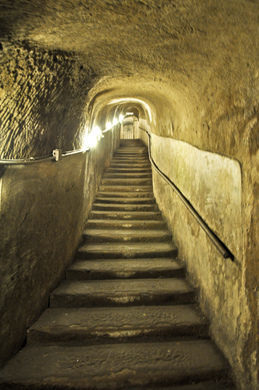
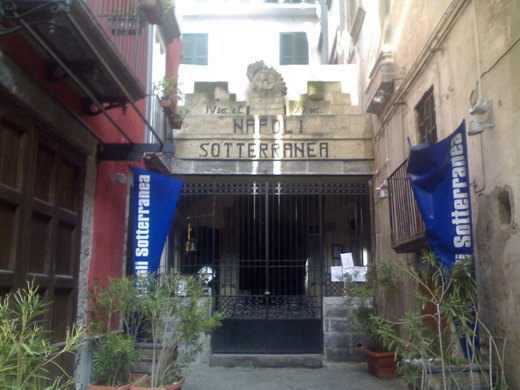
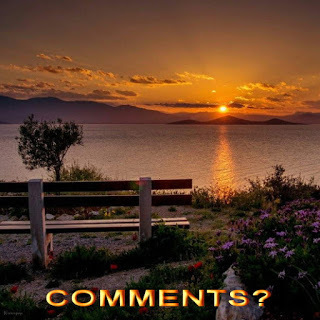
Clancy's comment: Mm ... Sounds interesting.
I'm ....

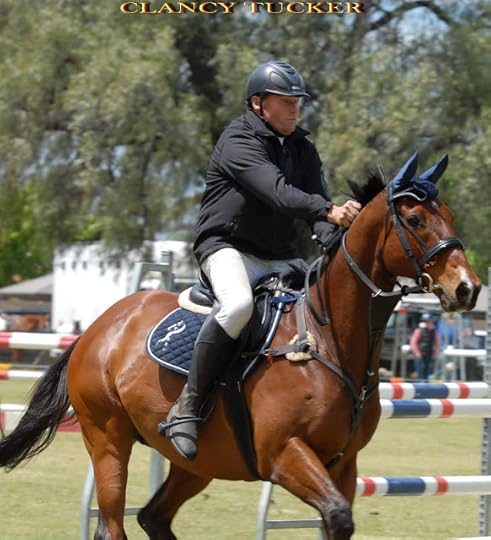
Published on January 13, 2019 12:10
January 12, 2019
13 January 2019 - TOP QUOTES

TOP QUOTES
G'day folks,
Welcome to some inspiring quotes to fire you up for the day.












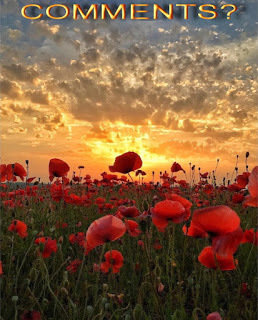
Clancy's comment: Well, did any of them fit the bill? Pass them on to others.
I'm ...


Published on January 12, 2019 12:19
January 11, 2019
12 January 2019 - MOVING PICTURES

MOVING PICTURES
G'day folks,
Welcome to some stunning moving pictures.
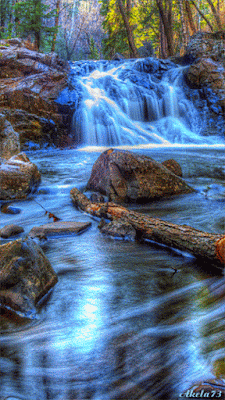
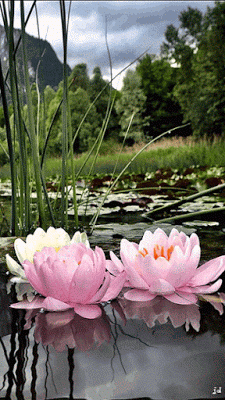




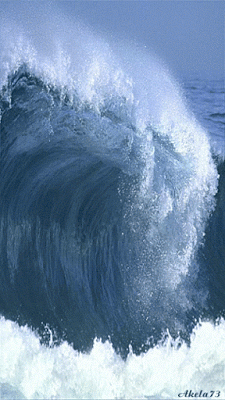
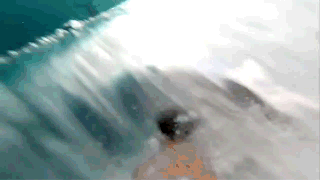



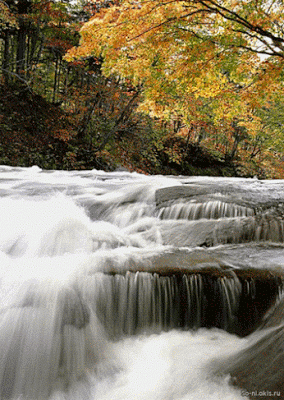





Clancy's comment: Very clever. I loved the jumping elephant.
I'm ...


Published on January 11, 2019 12:36



